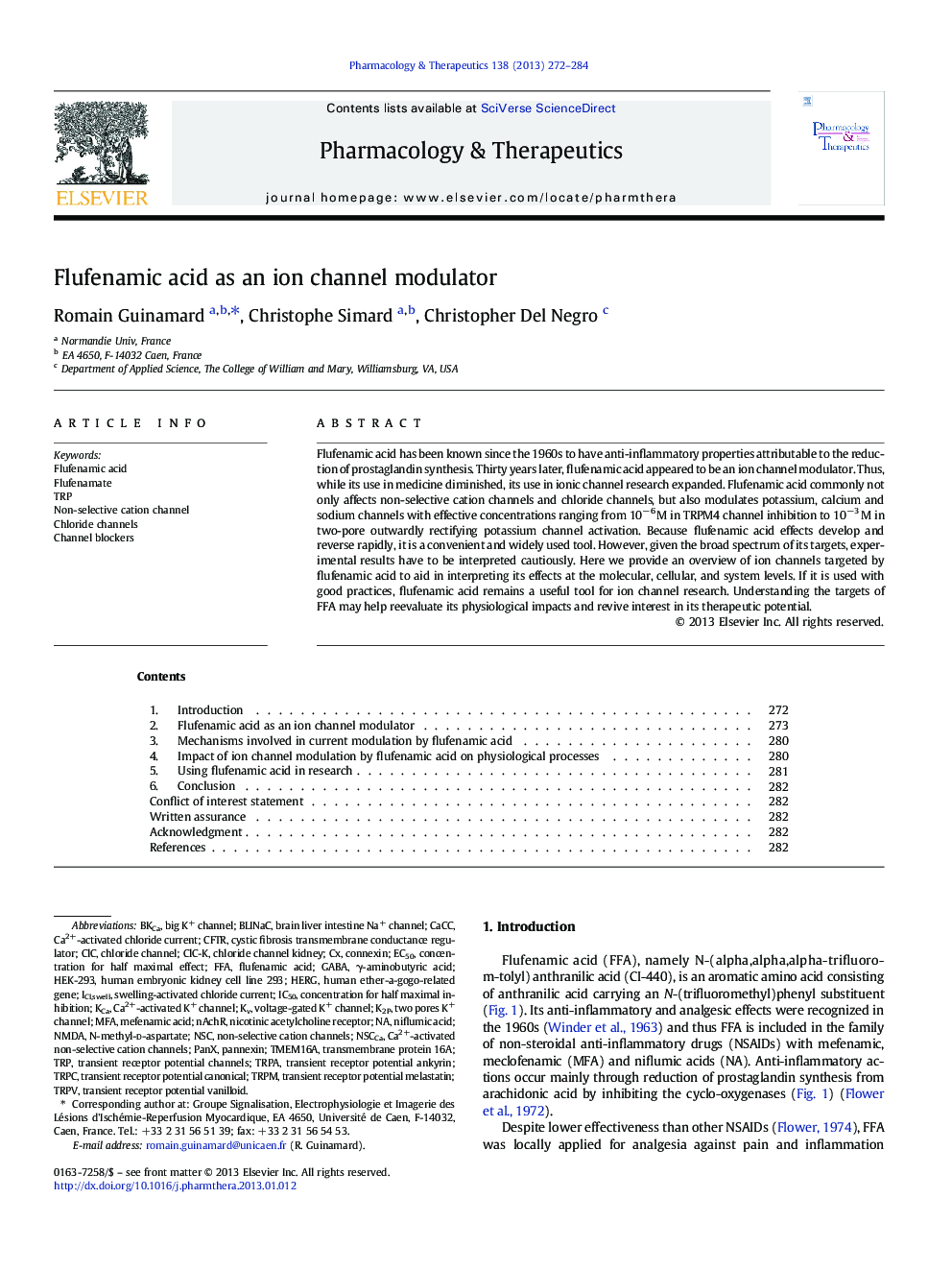| Article ID | Journal | Published Year | Pages | File Type |
|---|---|---|---|---|
| 2563321 | Pharmacology & Therapeutics | 2013 | 13 Pages |
Flufenamic acid has been known since the 1960s to have anti-inflammatory properties attributable to the reduction of prostaglandin synthesis. Thirty years later, flufenamic acid appeared to be an ion channel modulator. Thus, while its use in medicine diminished, its use in ionic channel research expanded. Flufenamic acid commonly not only affects non-selective cation channels and chloride channels, but also modulates potassium, calcium and sodium channels with effective concentrations ranging from 10−6 M in TRPM4 channel inhibition to 10−3 M in two-pore outwardly rectifying potassium channel activation. Because flufenamic acid effects develop and reverse rapidly, it is a convenient and widely used tool. However, given the broad spectrum of its targets, experimental results have to be interpreted cautiously. Here we provide an overview of ion channels targeted by flufenamic acid to aid in interpreting its effects at the molecular, cellular, and system levels. If it is used with good practices, flufenamic acid remains a useful tool for ion channel research. Understanding the targets of FFA may help reevaluate its physiological impacts and revive interest in its therapeutic potential.
